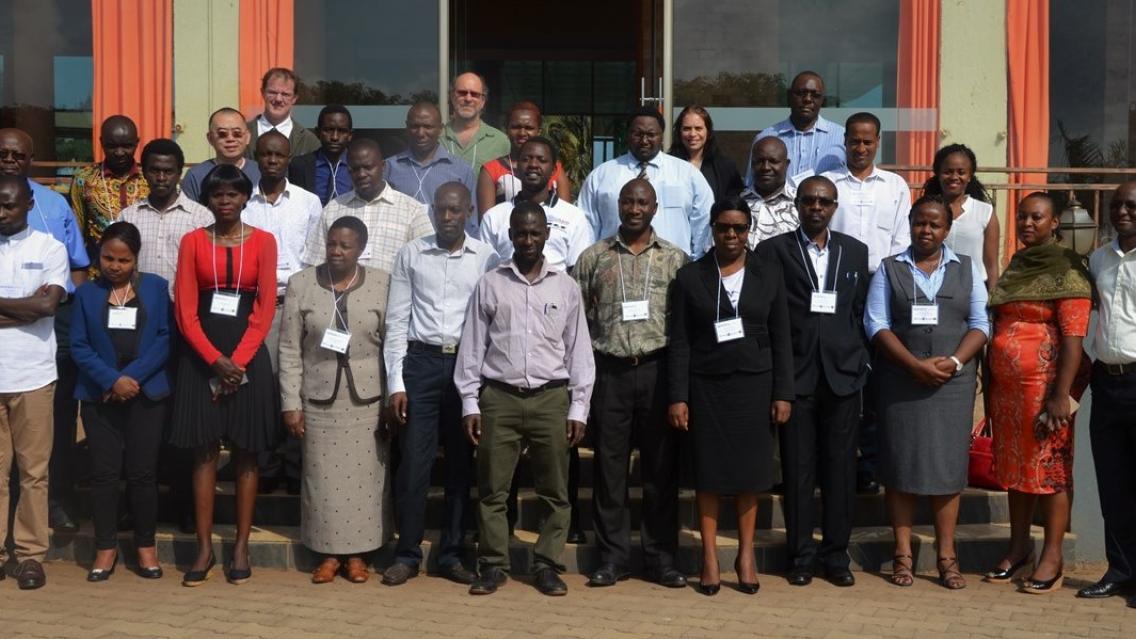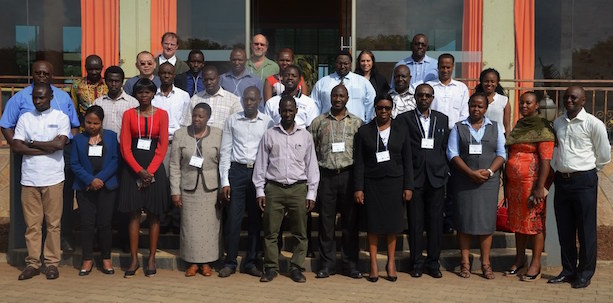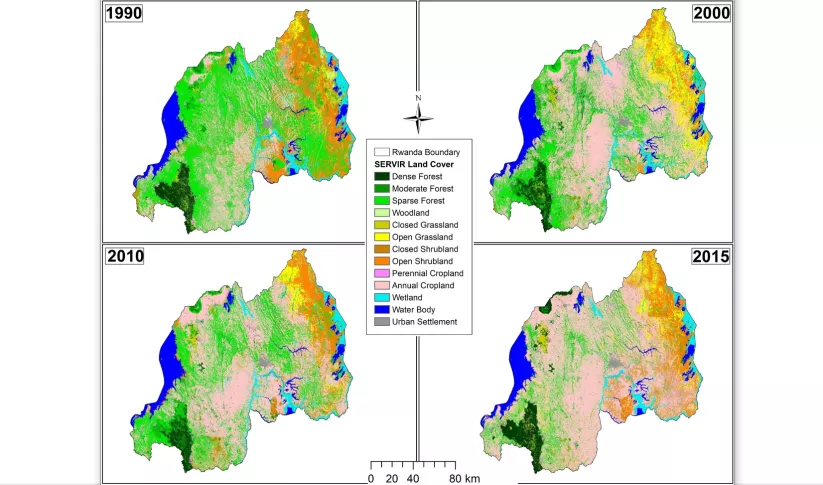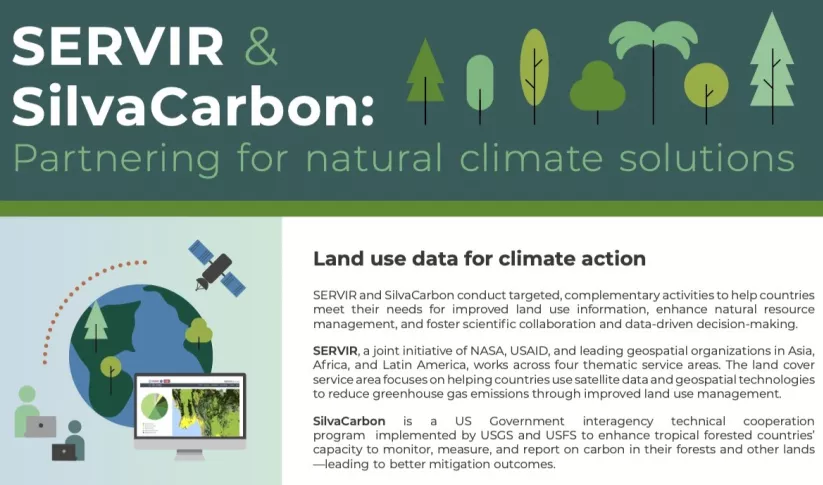Tracking the changing landscape of Eastern and Southern Africa

Healthy forests provide habitat for wildlife and sustain forest communities and economic activities. They also absorb and store enormous amounts of carbon, playing a critical role in stabilizing Earth’s atmosphere. Countries need accurate land cover data and methods for national-level monitoring of land cover changes and forest loss to inform forest management and policy. To answer that need, remote sensing experts from SERVIR-Eastern and Southern Africa (E&SA) at the Regional Centre for Mapping of Resources for Development (RCMRD) teamed with SERVIR Applied Sciences Team (AST) member Sean Healey of the US Forest Service to lead a land cover monitoring workshop in Uganda for regional environmental officials.
Healey heads up a SERVIR project called “Enabling Local Monitoring of Landscape Change across Eastern and Southern Africa.” This project aims to enhance SERVIR-E&SA/RCMRD capacity to map land cover change – including forest loss -- on an ongoing basis. It involves use of cloud computing and the Landsat archive to deliver historical and continuously updated 30-meter maps of land cover across Kenya, Malawi, Ethiopia, Zambia, Tanzania, Rwanda, and Uganda. A tool called “TimeSync,” developed by the project team, is used to deliver the Landsat imagery.
TimeSync accesses the full Landsat archive and facilitates pixel-level interpretation of Landsat time series stacks of imagery. This helps local experts develop historical land cover change reference data to characterize and quantify disturbances and landscape changes. During the training, held 23-25 January 2017 in Kampala, Uganda, participants learned how to use TimeSync for reference data collection.

Workshop participants
Workshop participants found TimeSync’s ability to monitor very small changes, including phenological differences occurring over very short durations, to be of great value. Some envisioned using the tool in current forest restoration programs. Many attendees noted that TimeSync will go a long way in enriching how they collect reference data and change analysis.
“I’m really excited to have had an opportunity to participate in this important training because it built our capacity in the subject matter,” said Sewnet Enyew from the Ministry of Environment, Forest, and Climate Change in Addis Ababa, Ethiopia. “…We had a good opportunity to share experience and create a network for the future in related fields.”
SERVIR-E&SA’s programmer worked with TimeSync’s developers and gained the ability to modify the software so that it can be customized for other reference data collection activities in the region.
“We were thoroughly impressed by the capability and professionalism of our RCMRD partners, and they quickly learned the tool’s ins and outs,” said Healey.
A total of 22 participants attended the Kampala training, from Rwanda, Zambia, Malawi, Ethiopia, Kenya, and Uganda. SERVIR-E&SA team members who helped lead the training plan to hold similar workshops in other countries.
Notes:
For the SERVIR project discussed in this article, engagement with RCMRD and the 7 countries for reference data collection and product delivery will be coordinated through the SilvaCarbon program.
Workshop participants came from the Ministry of Natural Resources, Energy and Environment – Department of Forestry, Malawi; Ministry of Lands, Natural Resources and Environmental Protection – Survey Department, Zambia; Rwanda Natural Resources Authority (RNRA); Ethiopia Mapping Agency, Ministry of Environment, Forest and Climate Change, Ethiopia; National Forestry Authority, Uganda; Makerere University, Uganda; Climate Change Department (CCD), Ministry of Water and Environment, Uganda; Kilimo Trust, Uganda; NEMA, Uganda; REDD+ Uganda; DRSRS, Kenya; Kenya Water Towers Agency (KWTA); Kenya Forest Service; and USAID-USFS - Kenya Water Tower Climate Change Resilience Program.
More information about the training and about TimeSync can be obtained from http://timesync.forestry.oregonstate.edu/tutorial.html



